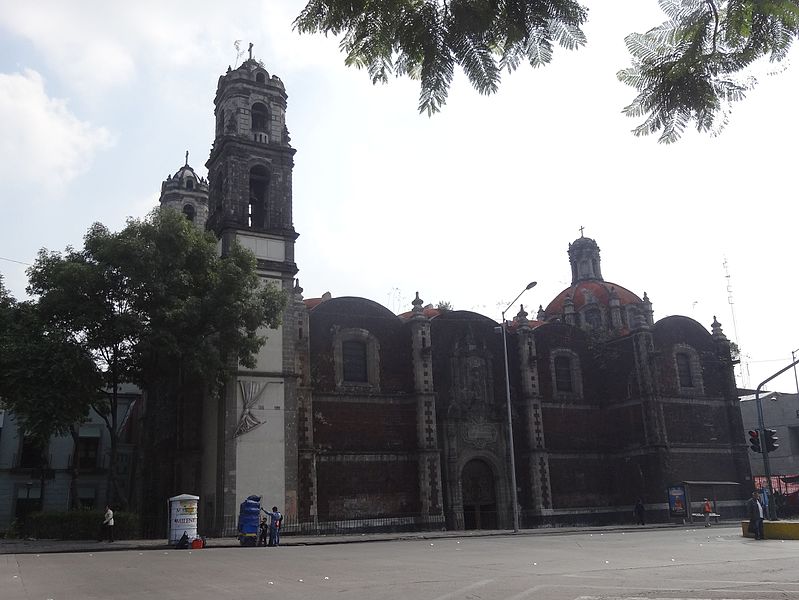

The Church of Santa Veracruz is striking and very old parish church just north of the Alameda Central. A church was built here in 1568. That original was replaced in the 18th century by the one we see today.
Most famous today for images of the Christ of the Seven Veils and the Virgin of Remedies, it’s a dark, mysterious hulk of a church. It’s usually a quick walk-in for visitors to the nearby Museo Franz Mayer and the National Printmaking Museum.
• Notably the church is the final resting place for the late colonial-period architect and sculpture, Manuel Tolsá. He spent much of his life living nearby.
The church was founded by the Arch-confraternity of La Cruz. This organization had been formed by Hernán Cortés in thanks to God for having reached land at Veracruz in 1519. It was only open to nobles, and was formed as a brotherhood of knights.
A 1563 decree from Viceroy Luis de Velasco and the archbishop Montúfarthe created four new parishes in the City. Lacking money for all these churches, the Viceroy and the Archbishop approached both the brotherhood of Santa Catarina and to the Arch-confraternity of Santa Cruz. Building these new churches would bring prestige to their respective headquarters. In 1568, the parishes of Santa Veracruz and the parish of Santa were created Catarina in both hermitages. This relieved the Viceroyal government of the responsibility for the spiritual needs of Spanish and Creole families in the northern and western areas of the City.
By the mid-18th century, the architect, Ildefonso de Iniesta Bejarano was contracted to replace the old church with a new and more suitable temple. He worked from 1759 to 1776 on the towers and the Churrigueresque-style side façade. The façade of the parochial house was built by an architect named Lorenzo Rodríguez.
• During the construction period, the Atrium was used to provide a funeral for 488 city residents who’d died in a major earthquake in 1768.
In 1796, an image known today as the Christ of Mercy was moved here, it’s own Church of Mercy having been badly damaged in an earthquake in 1792. The image has been lost though. Originally with large baroque altarpieces made of precious woods and gold, the beginning of the 20th century saw these too destroyed.
The Church of Santa Veracruz building, almost uniquely, has facades to the west, south, and east. The south façade is on Hidalgo Street and operates as the main entrance. The historically well-regarded Christ of the Seven Veils. Tradition has it that the image was a gift from Charles V from Pope Paul III. Charles V then gave it to the con-fraternidad.
The other important artwork is the Virgen de los Remedios. Sometimes called La Gachupina, a derogatory Nahuatl word for “Spaniard,” the Virgin is said to be the protector of the Spanish to Mexico. The image was brought here from her own shrine to pray during a period of drought, and was never returned. She also starts to key visitors in to the particularly complex history of the site, and the City itself.

Nearest at 0.05 kms.

Nearest at 0.06 kms.
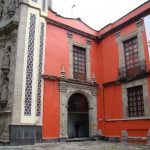
Nearest at 0.07 kms.
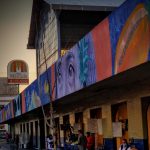
The 2 de abril market opened in 1902 and it's still a spectacular place for lunch!

Bellas Artes has long been an iconic symbol of Mexico City's culture and performing arts.
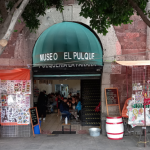
Pulque's own museum along the mythical Mexico-Tacuba causeway...
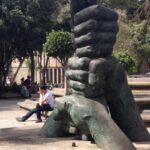
One of the most central of public squares is a beloved memorial to unforgettable tragedy.
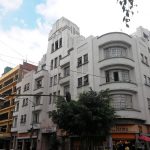
The classic Mexico City main street alive with people and commerce...